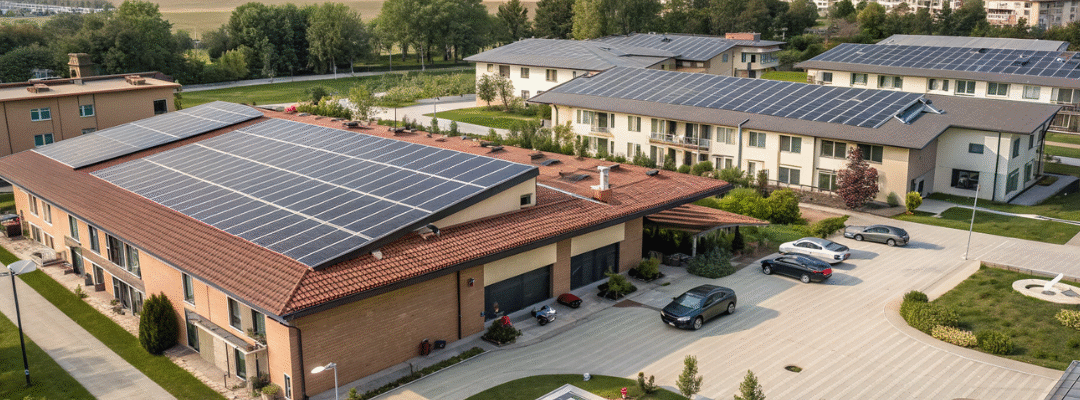Introduction: Solar as a Community Investment
In most Indian apartment complexes and housing societies, electricity costs for common areas are among the largest monthly expenses. Lifts, water pumps, corridor lights, and clubhouses consume power daily, driving up maintenance charges for residents.
Installing rooftop solar for these common area loads is the smartest first step societies can take. It’s predictable, cost-efficient, and ensures shared benefits for every resident.
Why Focus on Common Area Loads?
1. High and Predictable Consumption
- Common facilities (lifts, pumps, security systems, and lights) operate daily, with steady and measurable energy usage.
- Unlike individual flats, where consumption fluctuates, these loads are easier to estimate — allowing societies to size their solar systems accurately.
2. Single Meter Connection
- Most housing societies already maintain a separate electricity meter for shared facilities.
- This makes it simple to:
- Integrate rooftop solar into one central system
- Apply for net metering with DISCOMs
- Track savings transparently for all residents
3. Shared Benefits for All Residents
- Reduced electricity bills directly translate into lower monthly maintenance fees.
- Every household benefits, regardless of individual electricity consumption inside flats.
- Solar becomes a community asset, strengthening resident support and unity.
I short: Common area solar = predictable loads + easy billing + shared savings.
Example: Savings for a 100-Flat Housing Society
- Common Load Consumption: ~15,000 units/month
- Solar System Size: 50 kW rooftop solar
- Gross Cost: ₹30–35 lakh
- Subsidy (MNRE, PM Surya Ghar Yojana): ₹8–10 lakh
- Net Cost: ₹22–25 lakh
- Monthlyb Bill Before Solar: ₹1,20,000
- Monthly Bill After Solar: ₹60,000
- Annual Savings: ₹7 lakh+
- Payback Period: ~4 years
- Lifetime Savings (25 years): ₹1.5 crore+
“After going solar for common loads, our maintenance charges dropped by ₹700 per flat. Residents were thrilled with the savings.” – RWA President, Bengaluru
Government Subsidies & Support
- Pradhan Mantri Surya Ghar Yojana: Up to 40% subsidy on residential rooftop systems.
- Net Metering: Sell surplus solar power back to the grid and earn credits.
- Green Financing: Banks and NBFCs offer low-interest loans for RWAs and co-operatives.
Always work with MNRE-approved vendors to ensure subsidy eligibility.
Benefits Beyond Cost Savings
- Lower Maintenance Fees → Residents save ₹500–₹1,000 per month.
- Higher Property Value → Flats in solar-powered societies are more attractive to buyers.
- Eco-Friendly Living → Every 50 kW system saves ~60 tons of CO₂ annually (like planting 2,500 trees).
- Energy Independence → Less dependence on DISCOMs and rising tariffs.
- Community Pride → Being recognized as a “green housing society.”
Key Tips for Housing Societies
- Conduct an energy audit to measure common load usage.
- Ensure shadow-free rooftop space (~100 sq. ft. per kW).
- Choose Tier-1 panels and branded inverters for reliability.
- Sign an AMC (Annual Maintenance Contract) for worry-free operation.
- Present a clear cost-benefit analysis to residents for easy approval.

